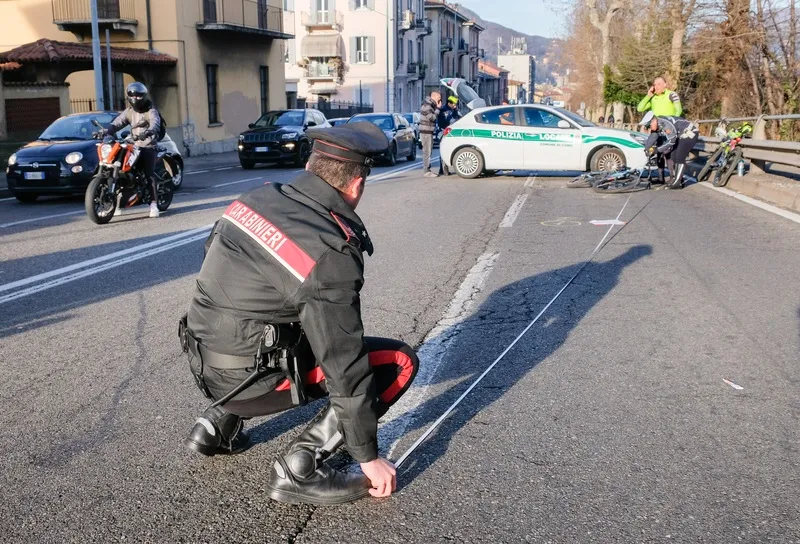Today, the euroFOT consortium published the findings of a four-year study focused on the impact of driver assistance systems in the Europe. The €22 million (US$27.5 million) European Field Operational Test (euroFOT) project which began in June 2008 and involved 28 companies and organisations, was led by Aria Etemad from Ford’s European Research Centre in Aachen, Germany. The study looked at existing technologies and their potential to both enhance safety and reduce environmental impact. euroFOT also reveale
June 26, 2012
Read time: 4 mins
Today, the 6026 euroFOT consortium published the findings of a four-year study focused on the impact of driver assistance systems in the Europe. The €22 million (US$27.5 million) European Field Operational Test (euroFOT) project which began in June 2008 and involved 28 companies and organisations, was led by Aria Etemad from 278 Ford’s European Research Centre in Aachen, Germany. The study looked at existing technologies and their potential to both enhance safety and reduce environmental impact. euroFOT also revealed a link between these systems and improvements in driver behaviour, fuel efficiency and traffic safety, as well as overall cost savings.
Over 90 per cent of the accidents throughout the European Union are attributable in some way to driver behaviour. Driver assistance technologies such as those tested in euroFOT may have a positive effect on driver behaviour and improving our understanding of their potential to impact road safety, traffic efficiency and the environment is at the heart of the euroFOT project.
For over twelve months, one thousand cars and trucks equipped with advanced driver assistance systems travelled European roads, and, for most of them, at each turn, acceleration, and lane change, their movements were tracked and recorded. The field test focused on eight distinct vehicle functions that assist drivers in detecting hazards and avoiding accidents: adaptive cruise control (ACC), forward collision warning (FCW), speed regulation system (SRS), blind spot information system (BLIS), lane departure warning (LDW), curve speed warning (CSW), safe human/machine interface and fuel efficiency advisor (FEA). More than one hundred terabytes of data were collected and analysed, providing the basis for the euroFOT consortium to assess the impact of these systems on roads.
If widely deployed across the EU, the systems studied by euroFOT could potentially reduce accidents and resources. The socio-economic assessment reveals a cost benefit ratio of 1.3 to 1.8 for ACC in trucks.
Using the ACC and FCW systems for cars and trucks, euroFOT determined that the costs of equipping the passenger cars and heavy trucks with the combined system leads to annual savings of approximately €1.2 billion (passenger cars) and approximately €180 million for heavy goods trucks.
“With the conclusion of the euroFOT study,6027 Allianz Insurance is now in a better position to create new insurance products which take into account the accident and claim reduction potential of driver assistance systems,” said Johann Gwehenberger, head of accident research, AZT Automotive Allianz Center for Technology, Germany. “We aim to extend loss prevention activities by, for example, motivating drivers and fleet owners to buy and use promising driver assistance systems.”
Key Findings:
Over 90 per cent of the accidents throughout the European Union are attributable in some way to driver behaviour. Driver assistance technologies such as those tested in euroFOT may have a positive effect on driver behaviour and improving our understanding of their potential to impact road safety, traffic efficiency and the environment is at the heart of the euroFOT project.
For over twelve months, one thousand cars and trucks equipped with advanced driver assistance systems travelled European roads, and, for most of them, at each turn, acceleration, and lane change, their movements were tracked and recorded. The field test focused on eight distinct vehicle functions that assist drivers in detecting hazards and avoiding accidents: adaptive cruise control (ACC), forward collision warning (FCW), speed regulation system (SRS), blind spot information system (BLIS), lane departure warning (LDW), curve speed warning (CSW), safe human/machine interface and fuel efficiency advisor (FEA). More than one hundred terabytes of data were collected and analysed, providing the basis for the euroFOT consortium to assess the impact of these systems on roads.
If widely deployed across the EU, the systems studied by euroFOT could potentially reduce accidents and resources. The socio-economic assessment reveals a cost benefit ratio of 1.3 to 1.8 for ACC in trucks.
Using the ACC and FCW systems for cars and trucks, euroFOT determined that the costs of equipping the passenger cars and heavy trucks with the combined system leads to annual savings of approximately €1.2 billion (passenger cars) and approximately €180 million for heavy goods trucks.
“With the conclusion of the euroFOT study,
Key Findings:
- Adaptive Cruise Control (ACC) and Forward Collision Warning (FCW) – Cars equipped with both systems could potentially affect up to 5.7 per cent of the injury accidents on motorways, while trucks could potentially affect up to 0.6 per cent of these accidents. euroFOT findings concluded that ACC and FCW in passenger cars might have a positive effect on the overall crash statistics, for all road types. Additionally, positive indirect effects on traffic efficiency could be identified. Due to the potential reduction of accidents the annual incidental delay calculated in lost vehicle hours could be lowered about more than three million hours on an EU-27 level. The environmental impact, which was measured in terms of fuel consumption, showed a reduction of about three per cent for passenger cars and two per cent for trucks without considering the benefits from changes in traffic efficiency. Drivers participating in the study also noted that ACC and FCW was a highly appreciated and used function that increased driver comfort as well as safety.
- Navigation Systems – the analysis shows that navigation systems are highly accepted and widely used, particularly on long trips on unfamiliar routes. These systems allow a fuel efficient route choice, depending on their routing algorithm. Overall, the positive effect on driver behaviour is reflected in positive changes in lane keeping behaviour, distance to the lead vehicle and harsh braking events.
- Blind Spot Information System (BLIS) - Approximately 80 per cent of drivers felt that BLIS increases safety. It is perceived as most useful on urban roads in heavy traffic and is not perceived as increasing workload. On written feedback, most drivers consider BLIS as an important complement to visual checks, rather than as a primary source of information.
- Speed Regulation System (SRS = Speed Limiter (SL) + Cruise Control (CC)) - It was observed that over-speeding and harsh braking events were reduced when SL is active. The effect of CC on over-speeding was a strong increase while strong jerk, critical time gap, and harsh braking occurrences were reduced.
- Curve Speed Warning (CSW) – According to the survey, around 75 per cent of the drivers felt that safety is increased thanks to CSW. They also found it most useful while driving on rural roads. Some participants stated that they used CSW as an indicator or for practicing more defensive driving. euroFOT also found that participants trusted the system more after CSW usage. The trustworthy and reliable scores were statistically significantly higher after some experience with the system.










